MARLBORO, NY
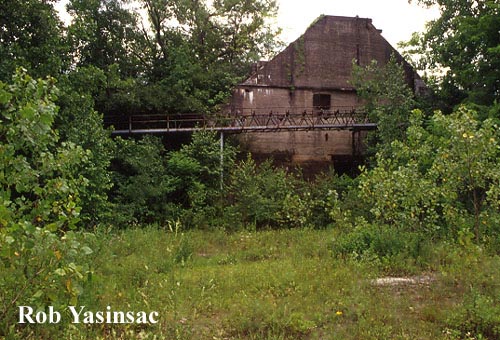
Conveyor and hopper (?) ruin, July 9, 2004.
New York Trap Rock
MARLBORO, NY

Conveyor and hopper (?) ruin, July 9, 2004.
The trap rock industry has long owned large pieces of property along the Hudson
River Although quarrymen have blasted away at the hills above
the Hudson since the time of colonization by European arrivals, it was not until
the late 19th-century that truly large-scale destruction of the shoreline became
commonplace. Although not the name of a specific type of rock, one definition
connects "trap" rock to a Dutch word meaning steps; Dutch colonists thought the
Palisades would like look a giant staircase if turned on end.
The
trap rock companies quarried for limestone
and dolomite, which were crushed mainly for use in roadways. The New York
Times reported that 1954 was a banner year for the industry, with the construction
of the New York State Thruway as a major source of demand. Local entities with names like
Upper Hudson Stone Company, Pulverized Limestone Company, and others once owned
these sites, eventually all overtaken under the umbrella of New York Trap Rock.
New York Trap Rock no longer exists, and a
modern industry giant named Tilcon owns many of the active quarries, including
those in Rockland and at Clinton Point in Poughkeepsie.
The famous quarries that sparked the preservation of the
New Jersey Palisades were shut down over century ago, and the Rockland Lake-area
quarries followed out the door by the 1920s. Across the Hudson, at Cold Spring,
quarrying was done in by the middle of the 20th-century and the land was set
aside as parkland. The Ulster County site shown here ceased
operation in the mid-1970s. The beauty and resilience of
nature in the face of industry-induced change can be admired today. Colorful meadows occupy the ground floor of the quarry site, where scarred cliffs
of rock loom above. Most of the industrial works have been removed, but an old conveyor
juts into the Hudson, and the ruins of what may be a hopper stand next to even older lime
kiln.
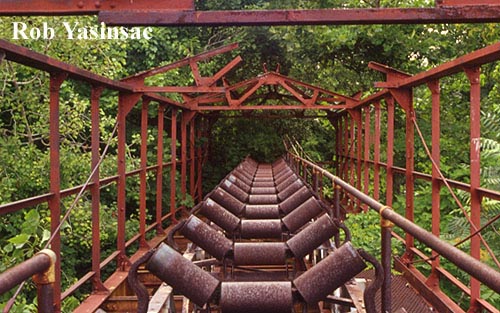
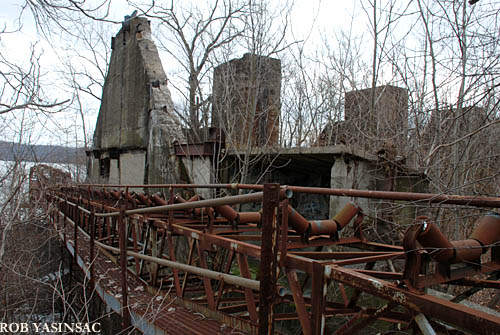
February 2008
Right
now we are in the process of reclaiming huge chunks of riverfront land from
industrial use, a process being celebrated up and down the Hudson Valley. If
these vast parcels were to be reindustrialized, neighbors would object, but no
one much seems to oppose using these sites for massive residential developments, ignorant of the
vast impacts that necessary utilities and automobiles would have on the local
environment. Although these new developments tout the connection to the river, one
hardly feels welcome hanging out in someone else's front yard. So much for getting
people back to river - these sites will only benefit those wealthy enough to
afford to live there, which is to say, usually not those who already live
nearby. I rather like it now, when the old industrial sites are returned to a natural state and quietly accessible, before we destroy these properties
again.
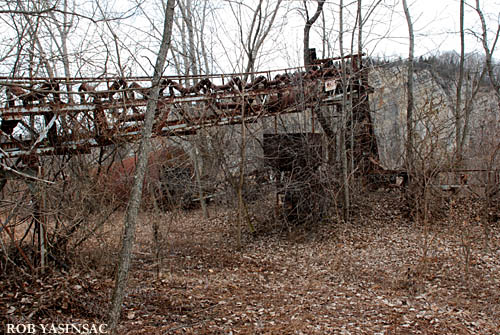
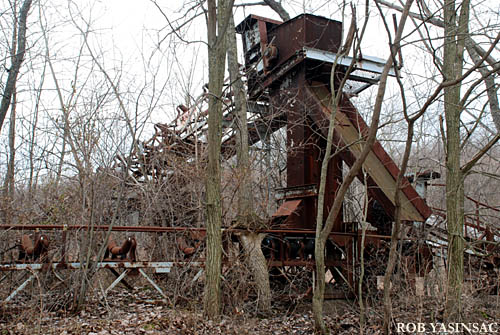
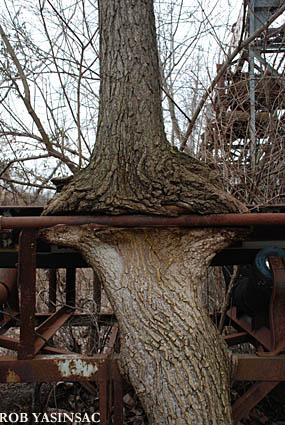
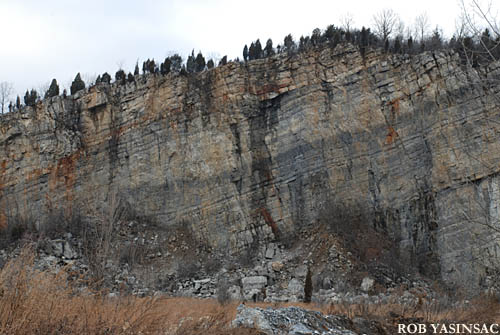
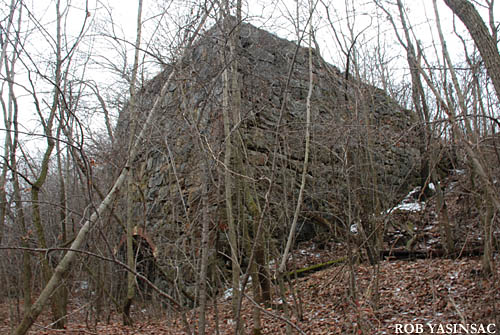
The ancient kiln.
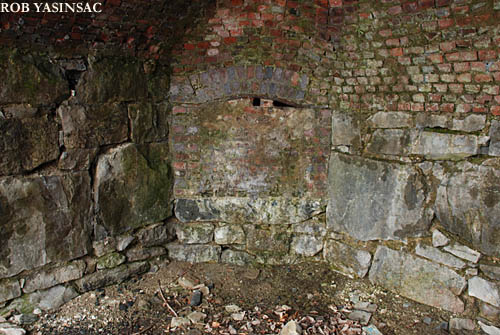
February 2008
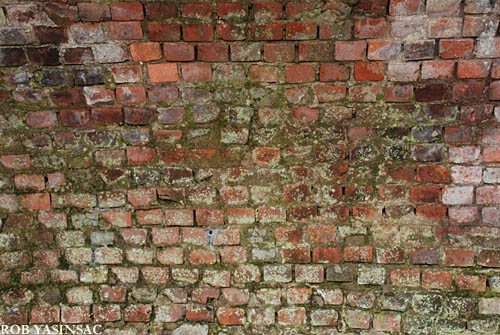
This page and all photographs copyright © 2008 by Robert J. Yasinsac. These photographs are posted for private, non-commercial viewing purposes only. All other uses prohibited. All rights reserved.